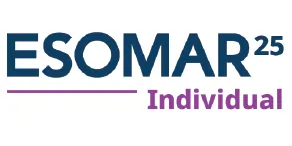
The adoption of Electronic Health Record (EHR) systems by healthcare organizations has raised a necessary concern of patient data security. These systems are a potential target for cyber threats because they contain sensitive health information. The electronic health records industry is projected at USD 28.14 billion for 2022 and forecasted to reach a staggering size of USD 35.23 billion by 2030, at a CAGR of 2.8% from 2023 to 2030. This post will analyze the issues that hinder data security in EHR systems and the possible ways to mitigate them alongside HIPAA and other regulatory compliance.
Challenges of EHR Data Security
EHR systems have many vulnerabilities, such as data breaches and other types of cyber threats like ransomware. A data breach is an unauthorized access that anyone may have to the patient records; engineers, personnel handling the server, or outsiders. It can also be in the form of a ransomware attack, where hackers lock access to crucial data for payment. These threats can potentially halt the healthcare services, risk patient privacy, and lead to severe financial implications for the institution. It is self-evident that it is imperative to protect the electronic health records and prevent unauthorized access to ensure safety and security.
The Safeguarding of EHRs
In an attempt to protect EHRs, healthcare institutions should adopt solid cybersecurity strategies. One of the best ways to safeguard patient information is encryption, as it renders the data unreadable to anyone who is not permitted to access it. Equally important, however, is the implementation of reliable access control mechanisms, which prevent the unauthorized viewing of sensitive data. Multi-factor authentication can serve as an additional safeguard by requiring diverse forms of identification to unlock data, creating further impediments to the cybercriminals gaining access.
EHR Systems Cybersecurity
The cybersecurity of EHR systems involves the application of different technology-based approaches in addition to ensuring staff awareness. Frequent system upgrades and the incorporation of protective software should also be employed as an attempt to curb unwarranted risks. There must always be a firewall combined with antivirus software and intrusion detection systems to safeguard against external threats. Moreover, the healthcare personnel should be educated on the appropriate measures regarding cybersecurity compliance, such as the need to identify phishing and the use of stronger passwords. This addresses one facet of how security breaches occur through the human factor.
Complying with HIPAA When It Comes to EHR
Compliance with HIPAA is the first line of defense when it comes to patient information. The health information of a patient is protected with strict compliance and due diligence. This is to say that every health organization must have the right security protocols installed and supportive measures in place. To ensure the protection of patient information, EHR systems must also be equipped with proper measures such as data encryption, safe data transfer, and access controls. In order to maintain compliance with HIPAA, obligation training and risk testing are important.
Protection of EHR Patient Information
Hypermodern technologies and best practices should be integrated to protect patient EHR data. In the event of an attack, comprehensive data backup and recovery measures should be in place. To further limit access to data, encryption must be applied to both motion data and data that is not actively being used. This permits healthcare systems to protect a patient’s sensitive information by constantly enforcing and updating their security measures.
Utilizing strong encryption methods, access controls, and complying with HIPAA create a cyber-threat-resilient EHR system. By doing this, healthcare systems can put patient data security at the core of their service and deliver on the trust put in them. Keep up with the latest developments on how the security of data is transforming the Electronic Health Records sector.






